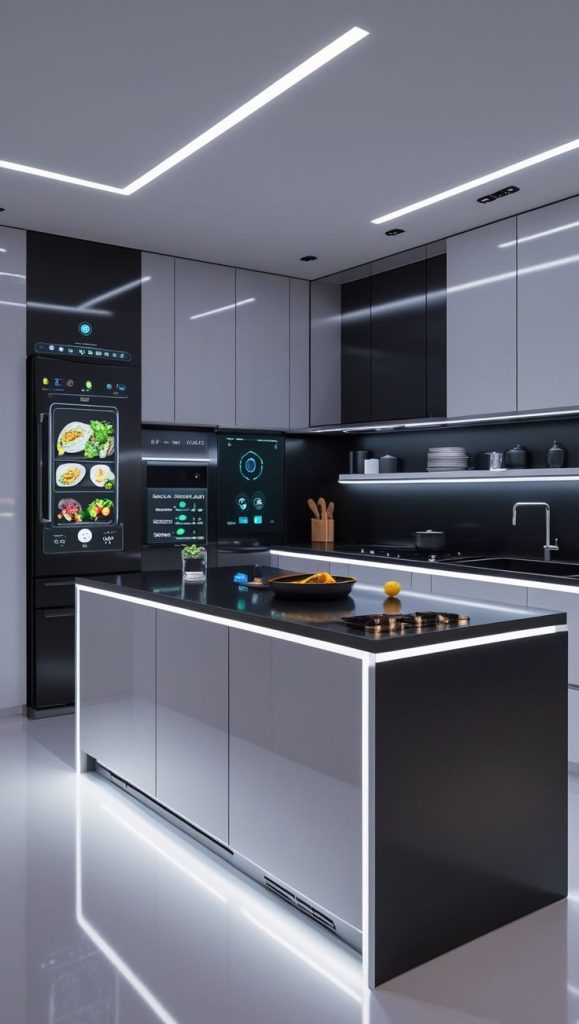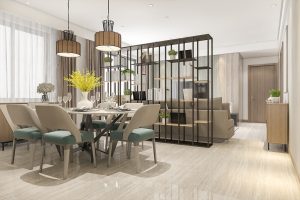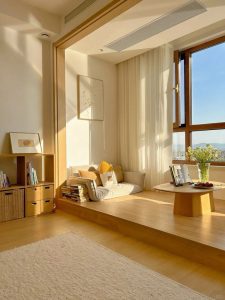Introduction: Where Aesthetics Meet Innovation
Interior design is no longer just about furniture, finishes, and color palettes. Today, it’s about merging form and function in the most seamless way possible. Welcome to the era of smart homes, where interior designing services don’t just beautify a space but also enhance the way we live within it.
As technology redefines modern living, interior designers have a unique opportunity to not only create beautiful homes but intelligent ones, too. This blog explores how tech can be integrated thoughtfully into interiors and what the future holds for smart design.
1. From Manual to Mindful: What Makes a Home "Smart"?

A smart home is a connected ecosystem where appliances, lighting, security, climate control, and even furniture respond to user input through automation, voice control, or AI learning. But good design is about how you integrate it.
When seeking interior designing services, it’s crucial to choose experts who can blend technology discreetly into the design, so it complements rather than competes with the aesthetics.
2. Smart Lighting: Function That Feels Like Art

Smart lighting systems are no longer just about dimming bulbs. They can now adapt based on natural daylight, your mood, or the time of day. Using circadian lighting systems, you can mimic natural light cycles indoors.
Design Tip: Recessed smart strip lights hidden behind wall panels or ceiling coves can offer stunning ambient effects. Ask your interior designers about integrating app-controlled lighting with scene settings for different times of day.
3. Invisible Tech: Design Without Disruption

Modern luxury homes are about subtle sophistication. That means hiding tech in plain sight. Think:
- Motorized TV lifts hidden in cabinets
- Flush-mounted speakers
- Smart mirrors with built-in displays
A great interior designer ensures technology never overwhelms a space. Instead, it lives quietly within the design language.
4. Voice & Gesture Control: A Touchless Experience

Voice assistants like Alexa, Siri, or Google Assistant can now control everything from blinds to temperature to music. But even more futuristic are gesture-based systems that let you control environments with simple hand movements.
5. Automated Climate & Energy Management

Gone are the days of manually adjusting thermostats. Smart sensors can now track your preferences and movement to optimize energy use.
Interior design can work hand-in-hand with HVAC tech by:
- Incorporating hidden vents in wall designs
- Creating natural ventilation routes
- Designing for thermal insulation and solar gain
6. Intelligent Kitchens: Tech-Integrated Culinary Spaces

Smart appliances like refrigerators with touchscreens, voice-controlled ovens, and sensor-based faucets are redefining modern kitchens.
But the key is how these blend into your cabinetry and layout. A designer can plan for:
- Pop-up charging stations
- Slide-in induction cooktops
- Seamless backsplash integration for smart displays
7. Security & Privacy Through Design

Tech-driven homes require robust security, but they must remain visually discreet. Today’s designers incorporate:
- Concealed CCTV camera placements
- Smart locks that match your door hardware
- Alarm systems hidden within skirting panels
Your home stays secure without looking like a surveillance zone.
8. Spa-Like Bathrooms with Smart Comfort

Bathrooms are turning into wellness zones. Integrate technology with:
- Smart mirrors with temperature and lighting control
- Heated floors and towel racks
- Sensor-based lighting and water-saving fixtures
9. Curated Home Automation Scenes

Imagine waking up to blinds that open gently, lights that warm up slowly, and soft music that starts playing automatically. Home automation allows the creation of personalized scenes for different moments in your day.
Work with interior designers who can program these scenes into your home’s ecosystem while ensuring they blend seamlessly into your lifestyle and design theme.
10. Art, Audio & Ambience: Tech for the Senses

From digital art frames that change daily to invisible surround sound systems, smart homes offer a multisensory experience. These features must be placed with precision and understanding of spatial acoustics and visual balance.
This is where designing go beyond decoration and move into true lifestyle curation.
Final Takeaway: The Future is Seamless
As we move forward, homes won’t just be beautiful. They’ll be intuitive.
Smart design isn’t about filling your home with gadgets. It’s about using tech meaningfully, so your space adapts to you. The right interior designer doesn’t just add smart devices — they integrate them with architectural finesse.
When you’re choosing interior designing services, think beyond floorplans. Choose someone who understands how innovation and emotion can live side-by-side.
Ready to make your home future-ready and beautiful? Explore design rooted in emotion and powered by technology. www.nativesutra.com
Frequently Asked Questions (FAQs)
Q1: How can smart technology be integrated without affecting my home’s aesthetic?
A: Choose flush-mounted devices, hidden wiring, and minimal hardware that blends with your decor. Work with an interior designer who specializes in integrating tech discreetly.Q2: Is smart home tech only for new homes or renovations?
A: Not at all. Many smart systems can be retrofitted into existing homes with minimal structural changes. Interior designing services can help plan the upgrade smoothly.Q3: Does smart home integration require a big budget?
A: It depends on the scale. Some features like smart lighting or thermostats are affordable and offer great returns on comfort. Designers can help prioritize based on your lifestyle.Q4: Will smart features work during power outages?
A: Most systems have backup power or offline modes for essential features. Always consult your design team and tech provider for redundancy planning.Q5: Are smart homes secure from hacking?
A: When installed by professionals and kept updated, smart systems are secure. Opt for encrypted devices and secure networks, and get guidance from your design and tech teams.







